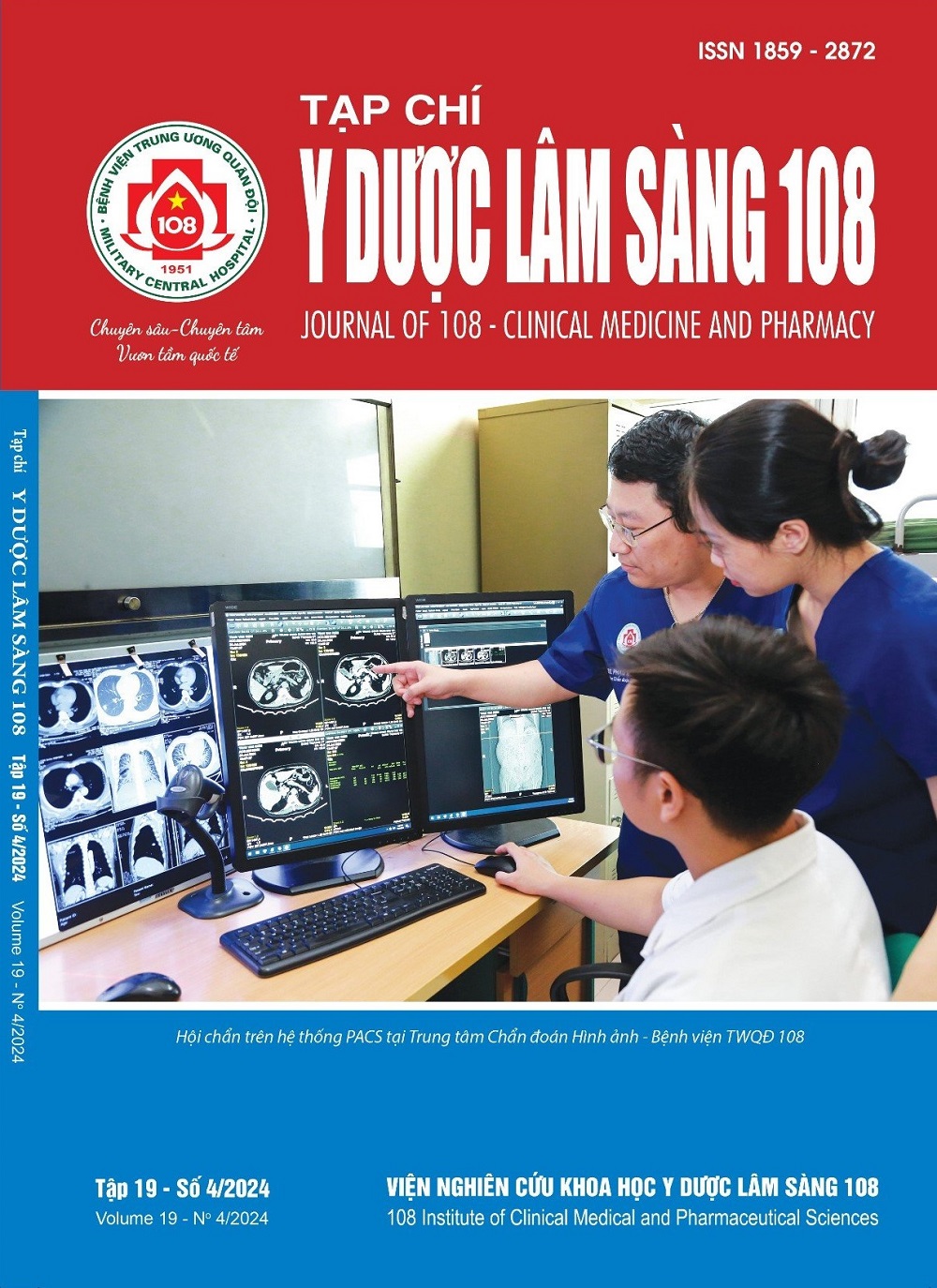Evaluation of nutritional status, affecting quality of life and some related factors in patients with chronic obstructive pulmonary disease
Main Article Content
Keywords
Abstract
Objective: Evaluation of nutritional status, affecting quality of life and some related factors in patients with chronic obstructive pulmonary disease. Subject and method: Cross-sectional descriptions of 95 patients were collected by convenience sampling. Result: Malnutrition was a common condition in patients with chronic obstructive pulmonary disease, with 60% (identified by the SGA scale and serum albumin levels). However, based on BMI, only 20% of patients were diagnosed with malnutrition. The average CAT score was 21.23 ± 2.98 and with up to 71.58% of patients experiencing a high impact on their quality of life. Malnutrition increased the risk of respiratory failure by 2.08 times and increased the risk of significantly impacting quality of life by 3.80 times with statistically significant differences observed (p<0.05). Conclusion: The state of malnutrition and negative impact on the quality of life are common among patients with chronic obstructive pulmonary disease. Particularly, for chronic obstructive pulmonary disease patients with malnutrition, the risk of respiratory failure and a worsened quality of life is significantly higher compared to those without malnutrition.
Article Details
References
2. Hanna KL, Glen KD, Lau BT et al (2016) Relationship between malnutrition and selected risk factors in two hospitals in Vietnam. Nutrition & Dietetics 73(1): 59-66.
3. Peter FC, Ian AY, Yuan CC et al (2019) Nutritional support inchronic obstructive pulmonary disease (COPD): An evidence update. J Thorac Dis 11(17): 2230-2237.
4. Agusti AG, Celli BR, Chen R et al (2022) Global strategy for the diagnosis, management, and prevention of COPD. Global Initiative For Chronic Obtructive Lung Disease: 23-39.
5. WHO (2004) Appropriate body-massindex for Asian populations and itsimplications for policy and interventionstrategies. The Lancet 363: 157-163.
6. Beck FK, Rosenthal TC (2002) Prealbumin: A marker for nutritional evaluation. Am Fam Physician 65(8): 1575-1579.
7. Gupta B, Kant S, Mishra R (2010) Subjective global assessment of nutritional status of chronic obstructive pulmonary disease patients on admission. Int J Tuberc Lung Dis 14: 500-505.
8. Cristina RR, Javier G, Javier P et al (2014) Classification of chronic obstructive pulmonary disease severity according to the new global initiative for chronic obstructive lung disease 2011 guidelines: COPD assessment test versus modified medical research council scale. Arch Bronconeumol 50(4): 129-134.
9. Hoàng Thị Hồng (2013) Nghiên cứu áp dụng phân loại mức độ nặng BPTNMT theo GOLD 2011 tại phòng khám quản lý bệnh phổi tắc nghẽn mạn tính bệnh viện Bạch Mai. Luận văn bác sĩ chuyên khoa cấp II - Bệnh viện Bạch Mai.
10. Sunmin K, Jisun O, Yuil K et al (2013) Differences in classification of COPD group using COPD assessment test (CAT) or modified Medical Research Council (mMRC) dyspnea scores: A cross-sectional analyses. BMC Pulmonary Medicine 35: 13-17.
11. Đỗ Nam Khánh, Phạm Thị Mai Ngọc, Chu Hải Đăng và cộng sự (2021) Tình hình dinh dưỡng của người bệnh mắc bệnh phổi tắc nghẽn mạn tính tại Bệnh viện Phổi Trung ương năm 2021. Tạp chí Y học Việt Nam 508(1), tr. 55-58.
12. Lê Thị Hường, Nguyễn Văn Thành, Nguyễn Thị Hồng Trân và cộng sự (2023) Nghiên cứu tình trạng dinh dưỡng và kết quả điều trị đợt cấp bệnh phổi tắc nghẽn mạn tính nhập viện điều trị tại Bệnh viện đa khoa Trung ương Cần Thơ năm 2022-2023. Tạp chí Y dược Cần Thơ, 61, tr. 106-112.
13. Planas M, Alvarez J, Garcia-Perisc PA et al (2005) Nutritional support and quality of life in stable chronic obstructive pulmonary disease (COPD) patients. Clinical Nutrition 24: 433-441.
 ISSN: 1859 - 2872
ISSN: 1859 - 2872
